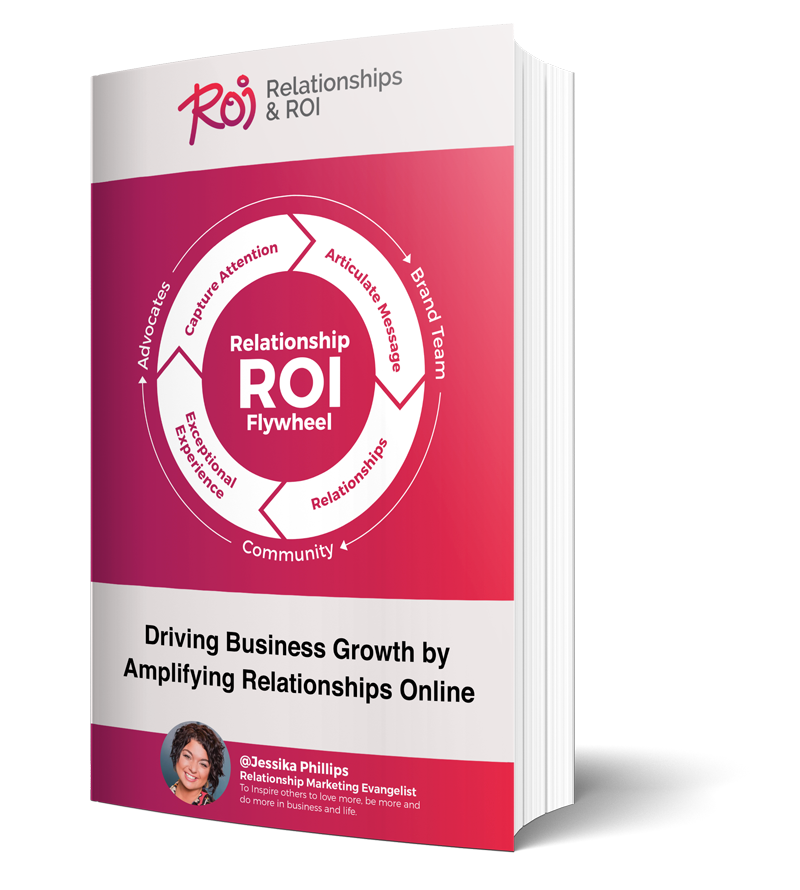Storytelling is one of the most impactful ways we can connect with others on a meaningful level. As we share our experiences we are creating relatable, engaging, memorable moments with others.
Whether we are sharing as an individual or as a brand, research shows that messages delivered as stories are up to 22 times more memorable than facts.
“We all have a story because the story is who we are, and that’s what branding is all about,” shared Linda Olson.
Linda Olson is the go-to Story Expert who is known for helping entrepreneurs, businessmen and women, and mission-driven people transform lives through the art of storytelling. She is a TEDx Speaker, bestselling author, and founder of Wealth Through Stories.
We were honored to have Linda on Magnet Marketers as we dove into the elements of an effective story and how we can translate one that creates a connection to our audience.
Where To Start With Storytelling:
The purpose of storytelling is to create a connection to another human being,
While it’s easy for brands to get wrapped up in the design elements - the font, colors, look and feel of our brand - we can fail to remember that our story is what truly matters.
Another way of saying that >> The WHY is more important than the HOW. It’s less about the tool we use and a lot more about the technique that we apply.
It’s not about your fonts and logo; it’s about your message.
It’s about understanding our audience’s pain points and needs much more than figuring out the “right” medium through which to share your message.
When getting started with storytelling, focus first on being authentic.
Showing up authentically involves sharing in a way that is honest, unfiltered and transparent. This is what captures people’s attention and gets them interested in what we have to say... because we’re speaking directly to them.
 But how can we have the confidence to do that? >> We have to remember that we each have a superpower.
But how can we have the confidence to do that? >> We have to remember that we each have a superpower.
We all know what we're capable of and the value we provide. The challenge lies in equating our superpower to how we can solve our audience's pain points or point of conflict that resonates with them. THAT is where the power of storytelling emerges.
Why Conflict Is Critical In Storytelling:
Conflict is the key element in a story because it is what captures attention and conveys emotion.
Think about every movie and television show EVER. They all have an element of conflict. It’s what keeps us watching. We’re hard-wired to want to know how the story ends BECAUSE of the conflict involved. It’s what takes us on that emotional rollercoaster.
“The other reason why conflict is so critical in storytelling is that it’s what allows us to connect through pain and problems.” - Linda Olson
With the world of social media, it’s easy to feel “less than.” After all, social media can tend to be a highlight reel. That’s why pain and problems aka conflict connect us. Conflict is relatable. Perfection isn’t.
We are all looking to feel seen, heard, and understood, and sharing about our pain points from the heart is truly the way we can do that.
 We’ve seen that firsthand, actually. One of our most-read blog posts is Jessika’s post sharing the 10 lessons that she’s learned in 10 years of business.
We’ve seen that firsthand, actually. One of our most-read blog posts is Jessika’s post sharing the 10 lessons that she’s learned in 10 years of business.
It was because of the fact that each lesson was shared as a STORY that truly created the connection with our audience.
Using Conflict Effectively:
The best part about conflict? >> We don’t have to look far for it. It’s everywhere and can be expressed and conveyed on so many different levels.
For individuals, think about the adversities you faced growing up and the challenges that shaped you. For brands, think about the obstacles you had to overcome to get to where you are today as a team.
As marketers, we understand our audience’s pain points and needs, which gives us the ability to go back in our history to figure out which conflicts we’ve experienced that will truly connect to our audience.
Some questions we can ask ourselves to help identify conflicts that can be turned into stories:
- How has the pandemic affected my life, personally and/or professionally over this last year?
- What is the biggest challenge I have ever faced?
- What skills and traits have I used to overcome the problems in my life?
- What’s the most painful moment I have experienced in life or business?
These questions will help you remember specific moments that you can translate into stories.
Storytelling Mistakes To Avoid:
Once we have clarity on the specific stories we want to share, we can really get to work practicing telling them!
“Be consistent with how you’re sharing your story regardless of the medium you’re using. This way, every time you dive in more, you give people another nugget.” @jessikaphillips (click to tweet)
Consistency will make your story memorable and repeatable.
 This brings us to the biggest mistakes Linda sees brands and individuals make when it comes to storytelling.
This brings us to the biggest mistakes Linda sees brands and individuals make when it comes to storytelling.
These are the 3 storytelling mistakes to avoid:
- Capture Attention: Remember that you have 2-3 seconds to capture someone’s attention. This means that you need to make an impact, FAST. Our attention spans are short, so get to the point and the heart of the story ASAP.
- Sharing too many details: Being long-winded is a huge mistake that storytellers make every day. Stories get too long because we share too many details. We assume that we need to bring our audience into the weeds and tell them everything, but the reality is that they want to hear the gist and the main points. Take a look at what elements of the story are essential to convey the main point you’re trying to make and cut the rest out. Every great story should be 2 minutes; no longer than 3 minutes.
- Not practicing: Storytelling is a skill, therefore it requires practice. It takes practice to share different stories with different audiences and learn which ones translate. It takes time to figure out the best way to articulate a specific message. Each time you share your story, you will learn something new based on the response of the audience! Be patient with yourself in developing that skill.
You’ll know that you’ve found the right conflict, resolution, and story elements based on the response you get from your audience. Their reactions will say it all.
Putting It All Together:
At the end of the day, it’s all about showing up and sharing specific short and memorable stories from the heart.
 Our story is our unique value proposition; it’s what we can share with the world that is completely unique to us, our experiences, challenges, values and superpowers.
Our story is our unique value proposition; it’s what we can share with the world that is completely unique to us, our experiences, challenges, values and superpowers.
“Sharing your stories is truly what makes people feel understood and supported, and that’s where the connection builds.” - Linda Olson
Remember that storytelling is an art that takes time and practice. It doesn’t happen immediately overnight.
It’s about finding the specific points you want to make and practicing conveying them in a way that others connect to and find value in.
Want to get started? >> We highly recommend checking out Linda’s TEDx talk. She responds to every single comment, so if it strikes you, leave a comment and create that connection! She also recently started a Roku Show with FTG Network, “Wealth Through Stories.”
What do you think are the critical elements of storytelling? What are some tips you have when refining your story? Share in the comments below!




Comments